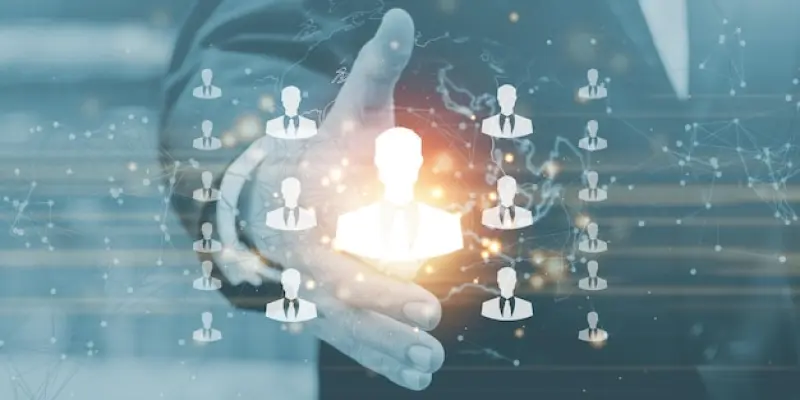The HR domain is experiencing a notable transformation, with artificial intelligence (AI) and data analytics emerging as indispensable tools reshaping corporate strategies. Companies, especially in Australia, are witnessing HR departments evolve from traditional roles into strategic innovators and advisors, thanks to the insights and technologies provided by leaders such as ELMO Software’s CEO, Joseph Lyons. These advancements come at a pivotal time when rapid technological developments and significant demographic shifts are redefining workforce dynamics. As organizations strive to remain competitive and relevant, HR’s new role requires a blend of advanced technology, adaptable strategies, and a deep understanding of generational differences.
AI and the Evolving Role of HR
AI is undeniably revolutionizing the HR landscape, offering unique capabilities that extend beyond traditional management tasks. The increasing acknowledgment of AI’s transformative potential is evident, with 32% of HR departments designating it as such, and a notable 68% expressing readiness to integrate AI solutions into their operations. This readiness illustrates a broader understanding of the strategic advantage that AI provides, including streamlined processes, improved decision-making, and enhanced employee engagement. However, leveraging these advantages requires more than just tools; it necessitates equipping HR teams with the right skills to maximize AI’s benefits. The shift towards AI-enriched HR functions empowers organizations to not only keep pace with technological advancements but also lead innovative strategies that fuel growth and adaptability. In the context of strategic planning, AI’s role extends far beyond automation; it augments human capabilities, fostering a culture of agility and responsiveness within the workforce. By facilitating seamless onboarding experiences, predictive analytics in recruitment, and personalized employee development plans, AI empowers HR teams to maintain a dynamic and engaged workforce. The evolution of HR into a strategy-centered discipline underscores its critical function in navigating complex organizational landscapes. Embracing technologies such as AI allows HR professionals to align closely with business objectives, proving their ability to drive far-reaching positive changes across company cultures. With AI’s continued evolution, the challenge remains for HR departments to stay abreast of technological developments and continuously refine their skill sets to optimize these tools fully.
Multigenerational Workforce Dynamics
The workforce is undergoing a demographic transformation as Baby Boomers retire and Gen Z increasingly enters the professional world. This shift introduces diverse perspectives and expectations, necessitating a re-evaluation of existing HR policies. As noted, there is a discernible difference in work styles across generations, which poses both challenges and opportunities for organizations. Almost half of HR professionals surveyed acknowledge the necessity for hybrid work models that accommodate the varied needs of contemporary employees. These models signify not just a change in workplace dynamics but a strategic evolution to embrace flexibility and diversity. Understanding and addressing multigenerational dynamics are crucial for organizations aiming to foster inclusive and resilient work environments. From a strategic standpoint, adapting to generational preferences involves more than implementing flexible schedules or remote work options; it calls for a holistic approach to employee engagement and satisfaction. The drive towards multigenerational inclusivity requires HR departments to deploy innovative solutions that cater to diverse expectations without compromising productivity and morale. Aligning policies with these evolving dynamics is instrumental in cultivating a workplace culture that values adaptability and shared growth. Such a culture not only attracts talent across age groups but also unlocks the collective potential of a diverse workforce, setting a precedent for other organizations aiming to thrive in a rapidly changing marketplace.
Collaborative Leadership and Data-Driven HR
A paradigm shift is occurring in how HR departments collaborate with other C-suite executives, particularly Chief Financial Officers (CFOs), reflecting a significant trend toward unified leadership. The necessity for enhanced partnerships is supported by a 32% increase in collaboration between HR and finance, a development that emphasizes the strategic alignment of HR initiatives with fiscal realities. Joint efforts between HR and finance facilitate a deeper understanding of how human resources strategies impact financial outcomes, ensuring that HR interventions are not only cost-effective but also aligned with broader organizational objectives. This collaboration underscores the pivotal role of data-driven HR practices in informing decisions that anticipate trends and navigate challenges effectively.
The integration of AI and data analytics within HR provides insights into workforce behaviors and performances that can drive informed strategies and decisions. These insights grant HR leaders the capability to tailor interventions to specific organizational needs, ultimately resulting in improved outcomes. While larger corporations may face difficulties analyzing extensive data sets, smaller enterprises might struggle with resource limitations. Nevertheless, mid-sized companies highlight a balance, illustrating that scalable analytics can transform challenges into opportunities for innovation and growth. The shift toward data-driven HR fosters an analytical approach, where initiatives are assessed and refined through precise metrics, ensuring adaptability and continuous improvement in organizational strategies.
Navigating Workforce Growth and Challenges
The human resources (HR) sector is undergoing a significant transformation, with artificial intelligence (AI) and data analytics emerging as essential components that are reshaping how businesses formulate strategies. In countries like Australia, there’s a notable shift where HR departments are transitioning from their traditional roles into becoming strategic innovators and advisors. This change is largely facilitated by insights and technological advancements provided by industry leaders like ELMO Software’s CEO, Joseph Lyons. These innovations arrive at a crucial time marked by rapid technological progress and substantial demographic shifts, which are redefining workplace dynamics. As businesses strive to stay competitive and relevant in this evolving landscape, the new responsibilities of HR necessitate a combination of cutting-edge technology, flexible strategies, and a profound understanding of generational differences to effectively manage and adapt to these changes, ensuring continued growth and success.

